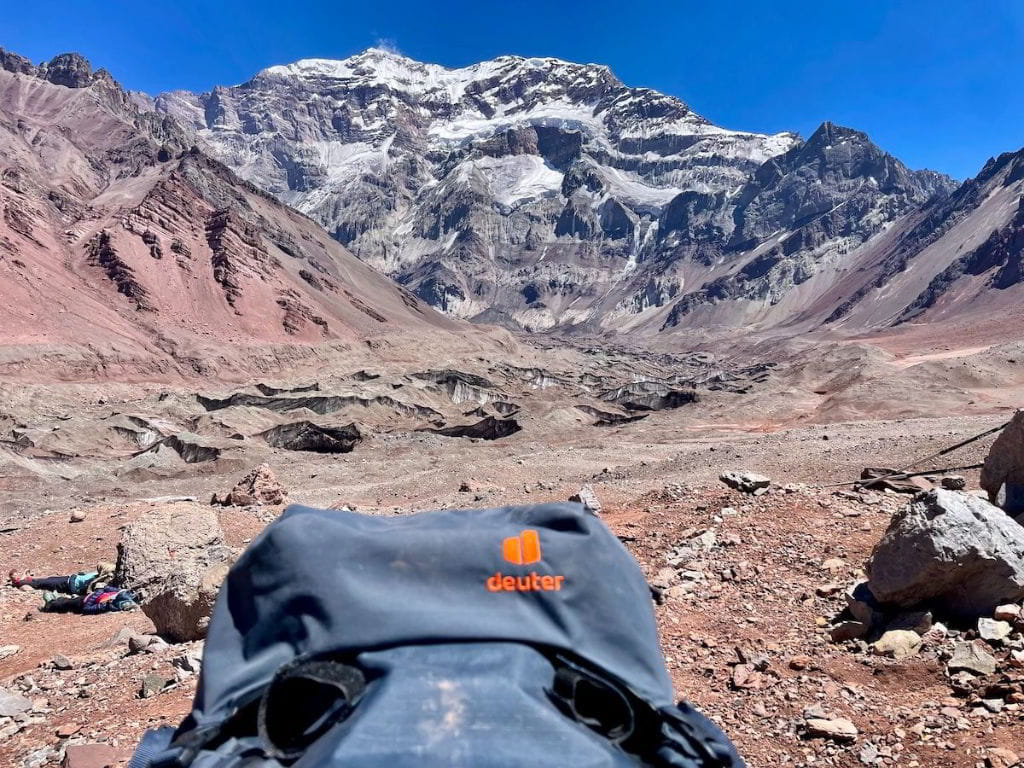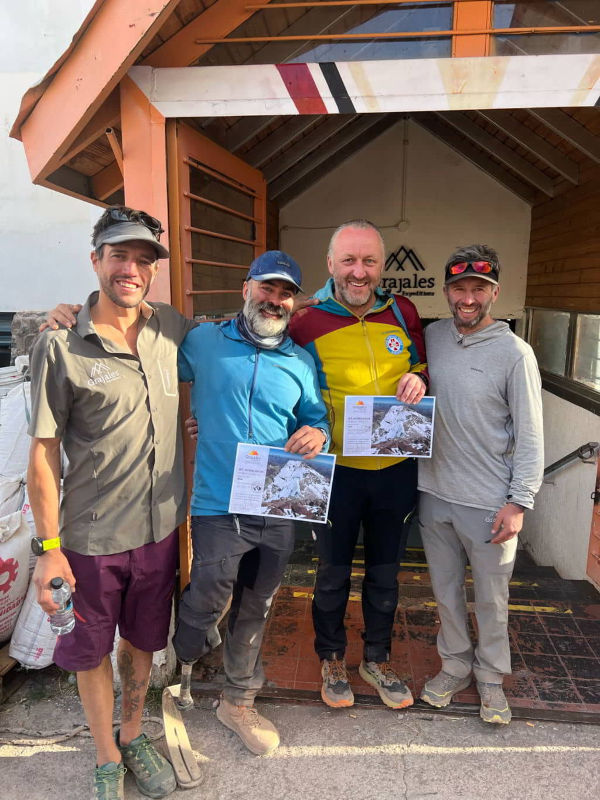“Never let an opportunity pass you by,” says Pete McAffee. This American climber knows the true meaning of that phrase—he went from reluctantly joining a social media contest to standing on top of the highest mountain in the world outside of Asia: Aconcagua.
The opportunity, in this case, was a contest created by Deuter USA (the American division of the prestigious German backpack brand), developed as a joint initiative with Grajales Expeditions, to offer a spot on an Aconcagua expedition. The same campaign is currently happening in Brazil, with the participation of Gear Tips.
But clearly, what made everything possible was Pete’s determination rather than the opportunity itself. This inspiring story was shared in this firsthand account he wrote about his well-earned climb to the summit of Aconcagua.

What would you do if you were given the opportunity to climb the highest mountain in the Southern and Western Hemispheres? What kind of questions would you ask yourself? Am I in good shape? Am I mentally strong enough? Why would I do this? To make things more complicated, I’m an amputee—I’ve lost my right leg… Am I physically capable of this? These were the questions going through my mind when I got the phone call.
I had signed up for a Deuter USA campaign to win a spot on an expedition to Aconcagua. Who would think you could actually win something on social media? Well, let me tell you, that spot was real, and I had five months to train before heading out on the expedition.
Tanner Schaefer, my good friend and climbing partner, helped calm my doubts. He told me that if this were a real lottery, “they’re the lucky ones, not you.” Most of my hesitation quickly disappeared once I accepted the offer. To be fair, Tanner was right—at the very least, I had just as good a shot as anyone else at successfully summiting Aconcagua. I was already an avid skier and mountaineer. I spent every other week playing in the mountains of Northern California and the Cascade Mountains of Oregon and Southern Washington. It’s not like I hadn’t done hard things before. I had climbed several technical and non-technical peaks, as well as high-altitude volcanoes in Ecuador. Heck, a group of friends and I had successfully climbed and skied down Denali—unguided! Tanner was right. My confidence was growing, and I was starting to believe I was the right man for the job.
That said, I wasn’t going to take this lightly. A big opportunity was on the line, and I wasn’t going to let it slip away. I ramped up my training, hauling 75-pound backpacks in the mountains and increasing my cardio on non-climbing days. I started spending longer days in the mountain and began hiking up and down rather than skiing; I talk a lot about the need to prepare to be lucky; I already had a solid cardio base and spent a lot of time in the mountains when this opportunity came up; I was in a good position to “get lucky.”
The grueling five months of training passed quickly, and January 26 arrived. My bags were packed, my gear was sorted, and I boarded a plane to Argentina.
The next day, I met my team for the first time. There were eight of us in total—two guides and six clients. It was a culturally diverse group of men and women, but we bonded quickly, and the team got along great. We did a gear check and enjoyed a good meal in Mendoza.
No expedition is complete without a bit of drama, and this one was no exception. Due to unusually high temperatures and the risk of flooding in the Vacas Valley, the Argentine government closed the Polish Traverse route. That meant we wouldn’t be taking the route we had planned. While this was disappointing to some, I kept an open mind and decided not to stress over things beyond my control. I was happy to adapt and move forward with the next best option: we would climb the Normal Route.

Our team would spend the next 13 days trekking through beautiful and desolate valleys and ascending a rocky, arid mountain.
The camps, including the base camp, were extremely well established and supported. They offered plenty of amenities and delicious food provided by Grajales Expeditions. And I’m not kidding—these meals were gourmet. I’ve never eaten so well in my life!
Each time we moved to a higher camp, we were rewarded with even more breathtaking views of the Andes and surrounding glaciers. I have never seen sunsets more beautiful than the ones I witnessed at Nido de Cóndores (camp at 5,500m).
As soon as we moved to the high camp, Camp Colera, at 5,980m of altitude, the push for the summit was on. It was already windy and freezing, and the forecast predicted worsening conditions overnight. I laid down in my tent, praying for a chance to attempt the summit. I didn’t pray for a successful summit because the summit itself must be earned.

In the early morning hours, we launched our summit attempt under far from ideal weather conditions. Considering we were dealing with winds strong enough to knock a man down, extreme wind chill, and lenticular cloud formations over the mountain, I consider myself very lucky to have successfully climbed Aconcagua!
But I was saddened that none of my teammates were there to share that moment with me, as they were all forced to turn back due to the extreme conditions. I was fortunate to share the struggle with another climber from a different Grajales expedition team, whom I had gotten to know well over the course of the expedition.
I am forever grateful to my incredible Grajales guides, Julián Castro and Jorge González, who believed in my ability and took the risk of letting me continue. Less experienced guides would have turned us back, but Julián has over 20 years of experience. I believe he has developed an instinct for reading people on the mountain and knowing who will make it and who won’t. Julián and Jorge were on the verge of turning us around several times that day, and I’m thankful they didn’t. The only way to reach the summit under those conditions was to move quickly, and we were the perfect team to do it.

I had no idea what I was getting into when I accepted a spot on this expedition. I formed relationships that will last a lifetime, and this mountain truly tested me. I experienced something that words cannot fully capture. Something that few people on Earth ever get to experience—and it made me a better person. I’d like to thank Grajales Expeditions, Deuter, and Ortovox for funding the expedition and giving me this opportunity. Never let an opportunity pass you by!
Pete McAffee
There isn’t much to add, except a heartfelt thank you on behalf of the Grajales Expeditions family. To Pete, for climbing with us and graciously sharing his experience; to our guides Julián and Jorge, for their professionalism and outstanding leadership skills; and last, but not least, to our partner company Deuter, for allowing us to be part of such a rewarding journey. As Jane Austen once wrote: “It is such happiness when good people get together—and they always do.”
Check out Pete McAffee’s review here: [https://www.facebook.com/GrajalesExpeditions/reviews](https://www.facebook.com/GrajalesExpeditions/reviews)
This post is also available in: Português (Portuguese (Brazil)) Español (Spanish)
